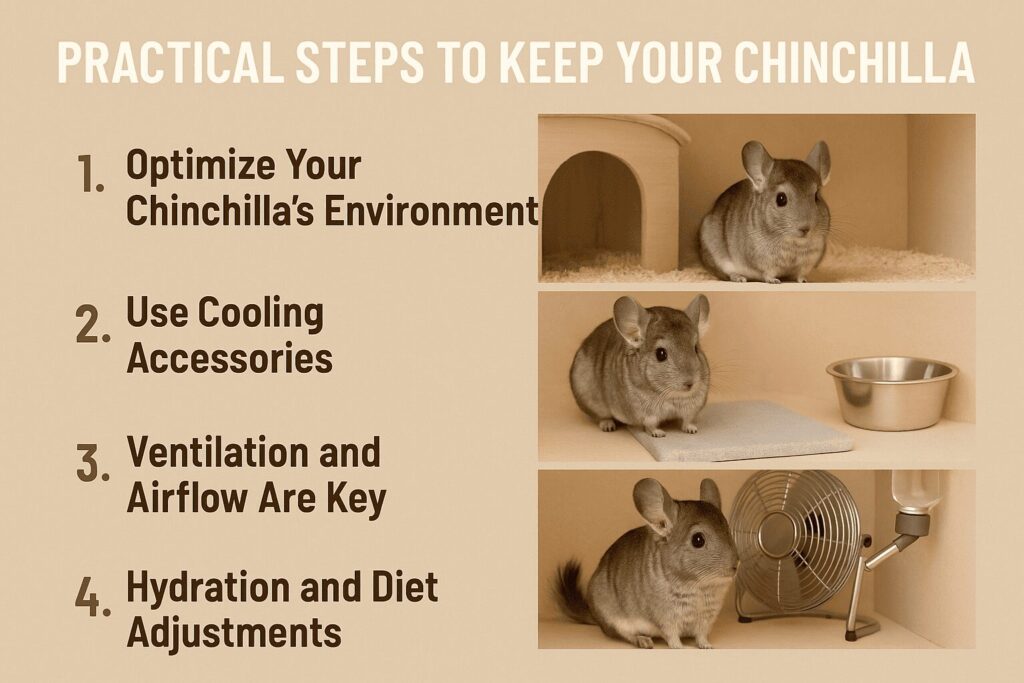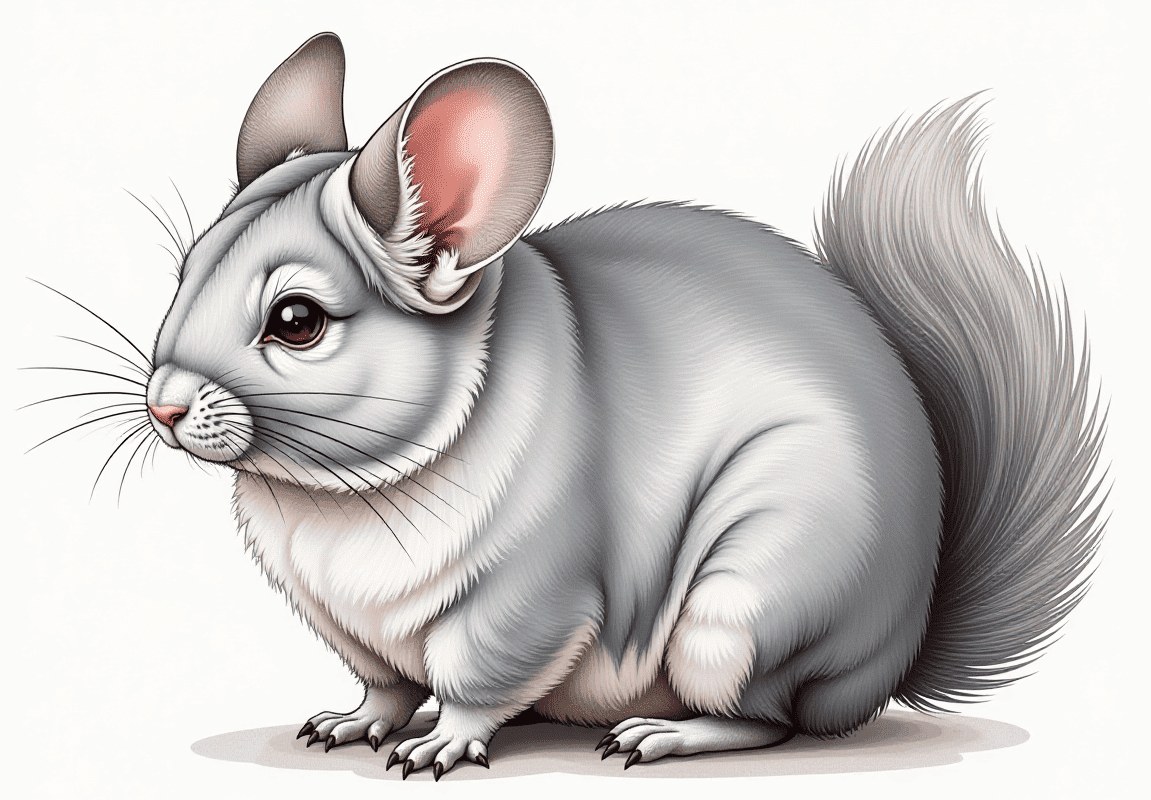Chinchilla Temperature Control for Hot Climates
The Problem: Chinchillas Overheat Easily in Hot Climates
Chinchillas, with their dense, plush fur, are built for the chilly Andean highlands, not sweltering summers. Their ideal temperature range is 60-70°F (15-21°C). Anything above 75°F (24°C) can stress them, and temperatures over 80°F (27°C) can lead to heatstroke, which is often fatal. If you live in a hot climate—think Arizona, Texas, or even humid Florida—keeping your chinchilla cool is a daily challenge. Without proper temperature control, your pet could suffer from lethargy, rapid breathing, or worse, leaving you feeling helpless and worried.
Agitating the Issue: The Risks Are Real and Scary
Imagine coming home to find your chinchilla slumped in its cage, panting heavily, ears red, and unresponsive. Heat stress hits fast. A 2018 study by the Journal of Exotic Pet Medicine noted that chinchillas exposed to temperatures above 78°F for just 30 minutes showed signs of organ stress, with prolonged exposure causing irreversible damage. Hot climates amplify this risk. Air conditioning might fail, or a poorly ventilated room can turn into an oven. Humidity makes it worse—chinchillas can’t sweat, and damp air traps heat in their fur. Ignoring this problem isn’t an option; it’s a matter of your pet’s survival.
The Solution: Practical Steps to Keep Your Chinchilla Cool
You don’t need to move to the mountains to keep your chinchilla safe. Here are proven, practical strategies to control temperature in hot climates, backed by data and real-world application.

1. Optimize Your Chinchilla’s Environment
Place the cage in a cool, shaded room away from windows or direct sunlight. Basements or interior rooms work best. A 2020 case study from the University of California, Davis, Veterinary Medicine department found that chinchillas housed in rooms with consistent 65°F temperatures showed 30% less stress behavior than those in warmer setups. Use a digital thermometer to monitor cage temperature—don’t guess. If your home gets warm, invest in a portable air conditioner (a 5,000 BTU unit is often enough for a small room) or ensure your central AC keeps the space below 70°F.
2. Use Cooling Accessories
Chinchillas love chilling on cool surfaces. Granite or ceramic tiles are affordable and effective—pop them in the fridge for 20 minutes, then place them in the cage. A 2019 study in the Journal of Small Animal Practice found that chinchillas given access to cooled surfaces during 80°F heat showed 25% lower heart rates than those without. Avoid frozen water bottles; they can get wet and harm the chinchilla’s fur. If you’re crafty, freeze-safe cooling mats designed for pets (like those from K&H Pet Products) are another solid option.
3. Ventilation and Airflow Are Key
Stagnant air is your enemy. Use a small, quiet fan to circulate air, but never point it directly at the cage—drafts can stress chinchillas. A mesh cage with good airflow is ideal; avoid glass enclosures that trap heat. If humidity is high (above 50%), a dehumidifier is a must. The Exotic Animal Hospital of Orlando reported in 2021 that chinchillas in high-humidity environments without dehumidifiers were 40% more likely to develop respiratory issues. A small unit like the Eva-Dry E-333 keeps humidity in check without breaking the bank.
4. Hydration and Diet Adjustments
Heat can make chinchillas drink more, so check their water bottle twice daily. Dehydration is a silent killer. Offer fresh, cool water, and consider adding a second bottle during heatwaves. Diet-wise, skip sugary treats like raisins, which can stress their system in hot weather. Stick to high-quality hay and pellets. A 2022 study from the Royal Veterinary College found that chinchillas on a hay-heavy diet in warm conditions had better digestive stability than those given processed treats.
5. Emergency Heatstroke Response Plan
Know the signs of heatstroke: panting, red ears, lethargy, or a wet chin (from drooling). If you spot these, act fast. Move the chinchilla to a cooler room, place it on a chilled tile, and dampen its ears lightly with a cool cloth. Call a vet immediately. The American Veterinary Medical Association reports that prompt intervention within 10 minutes of heatstroke symptoms can increase survival rates by 70%. Keep your vet’s number handy and know the nearest 24/7 exotic pet clinic.
Bonus Tips for Hot Climate Chinchilla Owners
- Nighttime Playtime: Let your chinchilla out to play in the evening when temperatures drop. Avoid daytime activity in hot rooms.
- Power Outage Prep: Have a battery-powered fan or cooling packs ready for AC failures. A small generator for your AC unit is a worthwhile investment in extreme climates.
- Monitor Behavior: Chinchillas are subtle. If they’re less active or eating less, it might be heat stress. Track their habits daily.
Conclusion
Living in a hot climate doesn’t mean you can’t give your chinchilla a happy, healthy life. By setting up a cool environment, using the right accessories, ensuring airflow, adjusting their diet, and being ready for emergencies, you’re not just preventing problems—you’re helping your pet thrive. The data backs it up: chinchillas can handle tough conditions with the right care. So, grab that thermometer, chill those tiles, and give your fluffy friend the cool comfort they deserve. Got questions or need more tips? Drop a comment below, and let’s keep the chinchilla love going!
